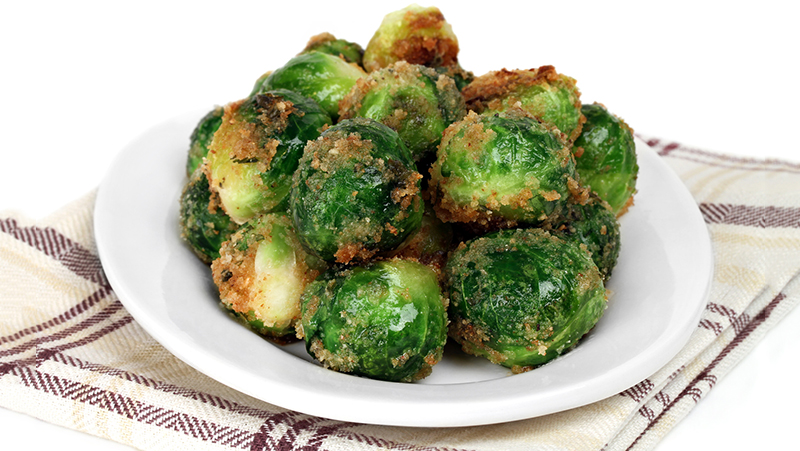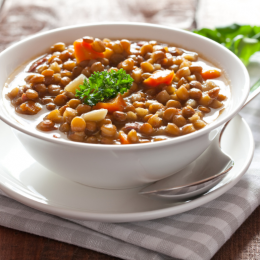7 healthy winter foods you should try

When cold weather rolls in, so does hibernation mode.
It can be easy to gain weight in cold weather due to a combination of factors. Fewer outdoor activities might mean that your overall activity level is lower in the winter. You also might be eating more food at holiday parties. The combination of reduced physical activity, comfort foods and holiday spreads can be harmful to your waistline, so make sure to balance it out with a little exercise (at least 30 minutes a day) and some healthy winter fruits and vegetables to battle the bulge.
There are a lot of good reasons to stock up on produce all year. Fruits and veggies typically have a lot of fiber, which helps keep you fuller for longer, and may even help keep you from grabbing for more tempting but less satisfying foods. If your goal is weight loss or weight management, load up your plate with fruits and vegetables (shoot for half of your plate) and fill the rest with foods low in fat and sugar. You’ll be well on your way to a healthier winter diet.
Fruits and vegetables are also packed with phytochemicals, compounds found in plants that help with everything from keeping your immune system strong (something that’s very important in the winter), keeping your heart healthy, and lowering your cholesterol. By eating plenty of fruits and vegetables, you’re not only keeping your weight down, but you’re making your body healthier.
Work these healthy seasonal fruits and vegetables into your winter menu and kiss that holiday weight goodbye.
Brussels sprouts
If you haven’t had them since you were a kid, you need to try Brussels sprouts again. Low in fat and high in fiber, these little veggies pack a nutritional punch. One of the best ways to eat Brussels sprouts is roasted. Whole Foods has three different ways you can prepare Brussels sprouts on its website, so you’ll find a flavor that goes with every meal. The simplest method is to roast with olive oil, salt, and pepper, and let your imagination do the rest.
Citrus fruits
We all know that grapefruit, oranges, and other citrus fruits are high in Vitamin C, but did you also know that they are high in dietary fiber? The fiber in citrus will help you feel full more quickly and is an important tool in managing your weight. Infuse your winter with this colorful recipe using beets, oranges, and mixed greens. This salad includes blood oranges and navel oranges for extra color and flavor variety.
Pomegranate
Pomegranate seemed to roll in a few years ago as a fad food, but there’s reason for some of the hype. Not only is the fruit high in fiber, but it’s also high in vitamins C and K among other nutrients. Pomegranate doesn’t just have to be for breakfast or snack time. You can incorporate the fruit in many dinners as well, and it’s suited very well for Mediterranean dishes. Stock up on superfoods in one meal and try this quinoa flatbread made with hummus, pomegranate and fresh veggies.
Dates
Dates are long-lasting and have a lot of minerals that may help in lowering blood pressure. They can also be made into a tasty and portable snack. Instead of grabbing a candy bar, try these homemade Larabars. Inspired by the brand you can buy from the store, these snacks are made of just two things: cashews and dates. They best part? They taste just like a cookie!
Subscribe to our newsletter
It's quick and easy. You could be one of the 13 million people who are eligible.
Already a member? Click to discover our 15,000+ participating locations.
Follow Us
Sweet potatoes
A holiday mainstay, sweet potatoes are usually accompanied by brown sugar and marshmallows. Sweet potatoes are a good source of fiber but are also high in Vitamin A and help keep your skin, teeth and eyes healthy. Looking for something a little sweet that won’t put you over the edge? This recipe includes walnuts, apples, and golden raisins. For something even healthier, you can make sweet potato fries or cubed sweet potatoes with pumpkin pie spice that are fit to accompany almost any dish. Mouth watering yet?
Butternut squash
You can find pumpkin-flavored anything in the fall and winter, but next time you see a recipe that calls for pumpkin, replace that with butternut squash. Roasted butternut squash oftentimes has a smoother texture than pumpkin and can stand in place of any pumpkin in a recipe. It’s also fat-free and sodium-free. Butternut squash soup is a winter mainstay, and this vegan, gluten-free and paleo recipe is hearty while still being healthy.
Collard greens
It’s important to eat leafy greens all year round, and collard greens are great to eat in the winter. They’re low in calories and fat-free, so there’s no reason they shouldn’t be put into your healthy eating rotation. If you’re not sure where to start, why not try this recipe for stir-fry collard greens? Ginger and jalapeno give the greens the right amount of zing, and honey provides a touch of sweetness.
What are some of your favorite winter foods? Tell us about them in the comments section below or on the SilverSneakers Facebook page.




